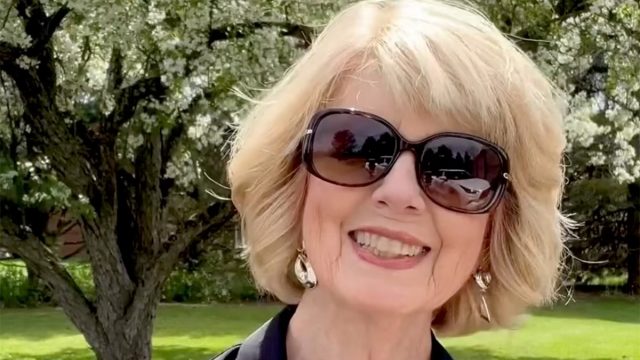10 Weight Loss Methods a 77-Year-Old Expert Swears By
Trying to lose weight can feel overwhelming with countless diets and conflicting advice. As a 77-year-old businesswoman and former model, Candace Cima has spent years researching and testing what truly works for sustainable weight loss. Through her platform, Living My Life in My 70s, and social media presence @Lifeinmy70s, she's helped thousands achieve their health goals using evidence-based methods. Here are her ten proven strategies, backed by scientific research, that can help you achieve lasting weight loss success.
Set Small Goals for Big Health Wins
"I want to encourage each of you that even a loss of 5% of your body weight has proven health benefits," Candace explains. "If you're 250 pounds, losing 12 and a half pounds can make a difference." She says that this modest weight loss can help prevent or even reverse conditions like type 2 diabetes, making it a realistic and worthwhile goal for beginners.
Keep Track of Everything You Eat
"By simply becoming more aware of what you're eating, you will change some bad habits," Candace notes. She points to research that consistently shows self-monitoring leads to successful weight loss. "A study in 2011 reviewed 22 studies and found a consistent relationship between self-monitoring and successful weight loss," she adds, recommending apps like MyFitnessPal for easy tracking.
Learn Your Daily Calorie Needs
Understanding your personal energy requirements is crucial for success. "Weight loss comes down to calories in versus calories used," Candace states. "An average deficit of 500 calories a day will result in an initial weight loss of about one pound a week." She advises that as your weight decreases, you'll need to adjust these numbers accordingly.
Cut Out Hidden Calories First
"Eliminate easy sources of excess calories like sugared beverages, switch to simply drinking water," Candace advises. She illustrates this with a practical example: "A beer has about 150 calories, so if you're drinking three beers a night, you're consuming 450 extra and unnecessary calories a day. If you keep this up every day, you'll gain about a pound a week or four pounds a month."
Choose a Diet You Can Stick To
"The fundamental point is to adopt a diet that creates a negative energy balance on adequate food quality," Candace emphasizes. While she acknowledges that different approaches work for different people, she particularly recommends the Mediterranean diet. "This diet is high in fruits, veggies, whole grains, beans, nuts, seeds, and olive oil. It allows moderate amounts of fish, poultry, and dairy, but has little red meat," she explains.
Consider Structured Support Programs
For those feeling overwhelmed, Candace recommends commercial weight loss programs. "I like these programs because they're convenient, provide the food and provide a lot of support with them," she says. Research shows Weight Watchers and Jenny Craig participants maintain significant weight loss after 12 months, though she cautions against very low-calorie or liquid diets.
RELATED: I Dropped 50 Pounds and Lost My "Pooch" by Doing This One, Simple Exercise
Use Smart Technology
Modern weight loss apps can be powerful tools when used correctly. "Choose any app that has interactive features with personalized messages and goal setting," Candace recommends. "The more specific and tailored it is to you, the better it will be." Studies show these apps help users reduce caloric intake and increase healthy food consumption.
Make Eating a Mindful Activity
"I want to encourage everyone to make eating an activity that connects you with other people," Candace shares. "Turn off the TV, gather around a table, eat with someone else, carve time out in your day and make it an intentional activity." This approach helps develop a healthier relationship with food while strengthening social connections.
Focus on Diet Before Exercise
While exercise matters, Candace emphasizes proper order: "I would ask you to shift your focus to your diet when weight loss is the desired goal. You need to lower your calories." She recommends gradually increasing physical activity over time to maintain weight loss rather than relying on it for initial results.
RELATED: 5 Things I Eat to Amp Up My Protein Intake Without Extra Calories
Build Habits That Keep Weight Off
"The biggest predictor of keeping the weight off? Well, exercise," Candace reveals. She recommends 30 minutes of physical activity five to seven days a week, spread throughout the day if needed. Daily weigh-ins also help: "If you know early that you're gaining weight, you can make small adjustments." Regular participation in accountability groups provides additional support for maintaining success.
💪🔥Body Booster
Key Takeaways:
- Begin with a realistic 5% weight loss goal
- Track everything you consume
- Know your personal calorie needs
- Eliminate liquid calories first
- Choose a sustainable eating plan
- Consider structured support
- Use technology wisely
- Practice mindful eating
- Prioritize diet changes
- Build maintenance habits.
And if you enjoyed this article, take advantage of these 15 Quick Ways to Lose Body Fat Percentage in a Week.





